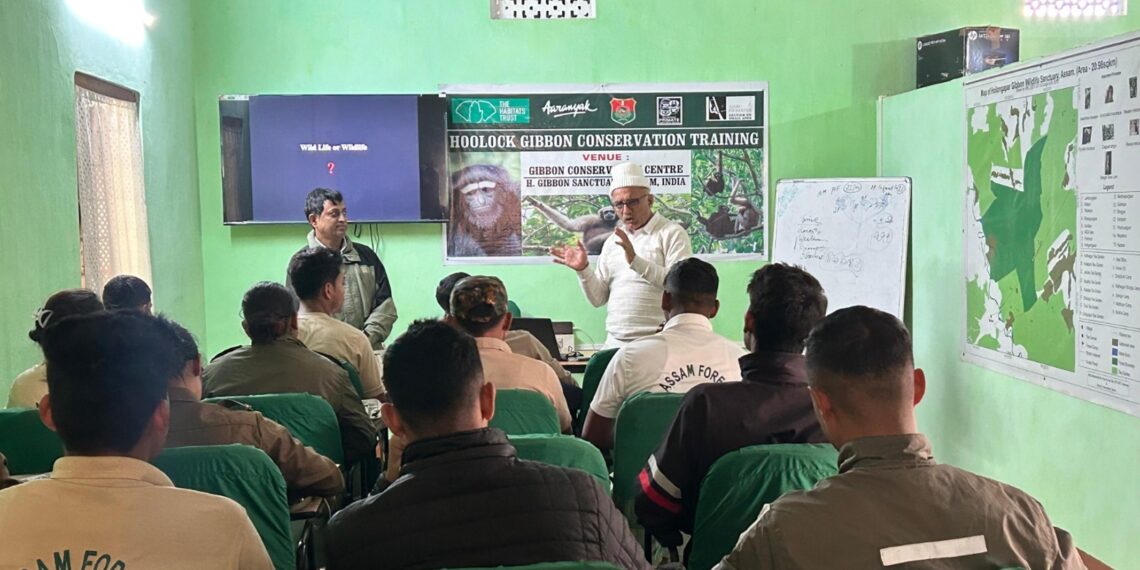Guwahati: A training programme was conducted for the staff of the Assam Forest Department on the conservation of the endangered Western Hoolock Gibbon.
This specialised training was organised by Aaranyak in collaboration with the Assam Forest Department.
Supported by The Habitats Trust and the Primate Specialist Group of the International Union for Conservation of Nature (IUCN), the training focused on equipping frontline forest staff with essential knowledge and skills required for Hoolock gibbon conservation.
The Western Hoolock gibbon (Hoolock hoolock), often known as the “Ape of India,” is primarily found in the seven northeastern states of India.
It predominantly resides on the southern bank of the Brahmaputra River and to the east of the Debang River.
However, habitat fragmentation, poaching, and encroachment are significant threats to its survival, compounded by a lack of awareness about effective conservation strategies, especially among frontline forest staff.
Dr. Dilip Chetry, Senior Primatologist and Head of Aaranyak’s Primate Research and Conservation Division, explained that the week-long residential course aimed to provide participants with crucial skills for Hoolock gibbon conservation.
The training also included practical field exercises, giving participants hands-on experience in conservation research methods.
The 8th batch of the training programme was conducted at the Gibbon Conservation Centre of Aaranyak in the Hollongapar Gibbon Sanctuary in Mariani, Assam.
Thirteen forest guards, including four female and nine male participants from various forest divisions such as Doomdomma, Digboi, Dibrugarh, Sivasagar, and Jorhat, participated in the programme.
Nandha Kumar, the Divisional Forest Officer of the Jorhat Forest Division, inaugurated the programme on January 23, emphasising the importance of applying the knowledge gained in the field and thanking Aaranyak for its contributions to training newly recruited frontline staff.
ALSO READ: Arab nations stand firm against relocation of Palestinians from Gaza
Experts from various fields conducted the lectures and field exercises.
The training concluded with a convocation on January 29, led by Dr. Dilip Chetry, who praised the collaborative efforts of the Assam Forest Department, particularly the Jorhat Forest Division, and the local community for their support in facilitating the programme.
The event concluded with the distribution of study materials, including a training manual, books on Hoolock gibbons, posters, participation certificates, and group photographs.















